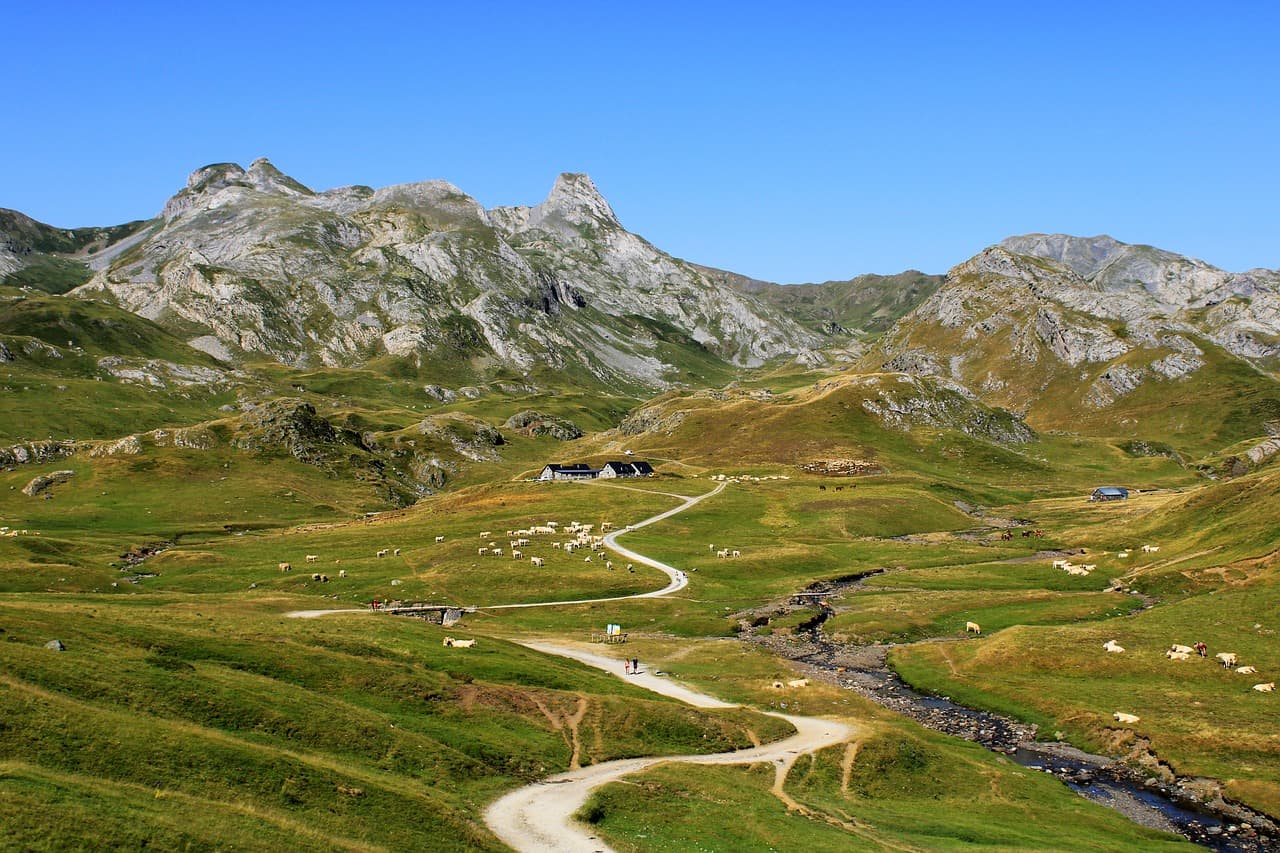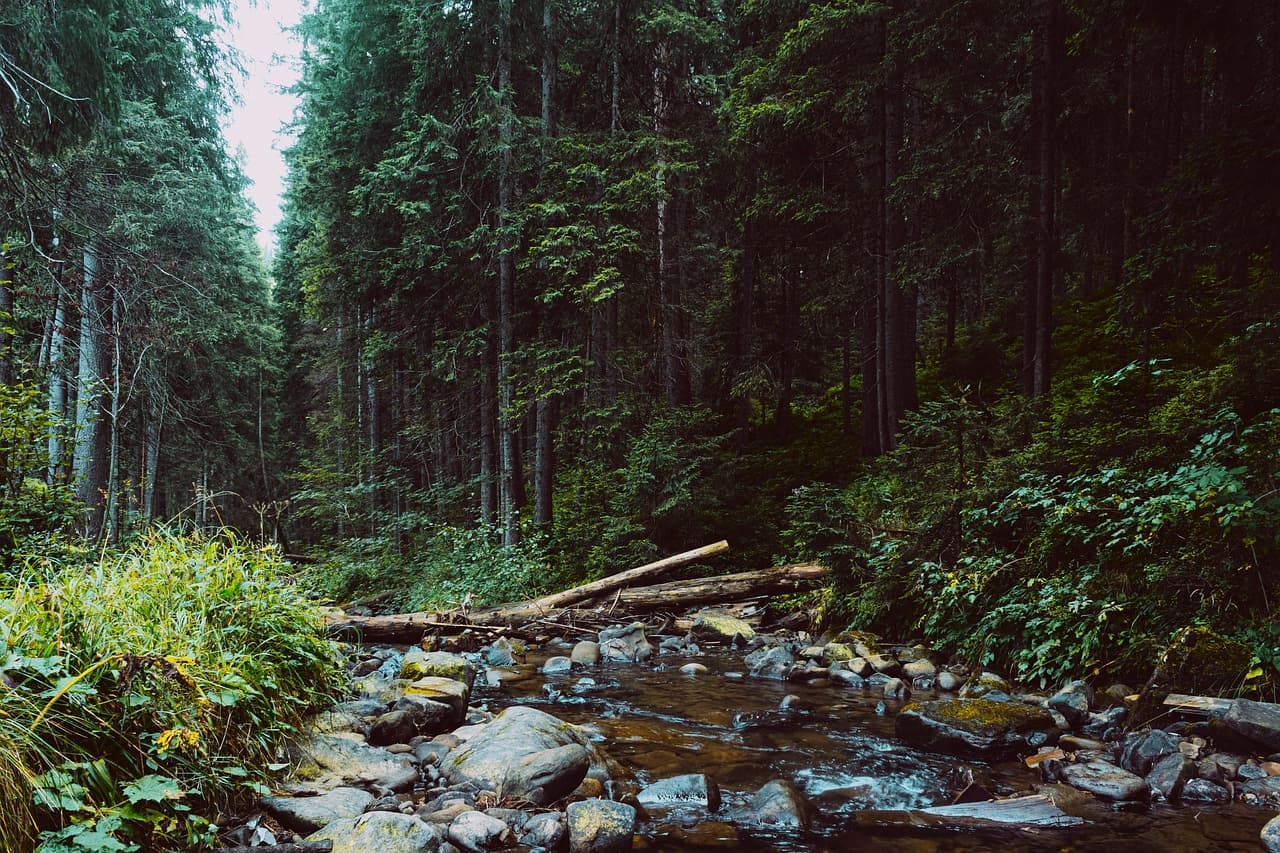Online Lotto, where the thrill of chance meets the excitement of exploration! Imagine winning big and using your jackpot to embark on unforgettable adventures. With Online Fasloto, your dreams of traveling to exotic destinations can become a reality.
Picture yourself trekking through the breathtaking landscapes of Pyrenees National Park, where rugged mountains meet lush forests and pristine lakes. Explore the untouched wilderness, encounter rare wildlife like brown bears and golden eagles, and marvel at cascading waterfalls like the majestic Gavarni.
Pyrenees National Park
The park area of 460 km2 occupies the northern side of the Pyrenees. The creation of a protected area in 1967 was aimed at protecting mountain ecosystems from the effects of tourism. Road and rail routes to the national park go through the city of Tarbes. The weather is unstable due to the terrain. Daily forecasts provide up-to-date information. The average temperature in summer is 20-24o, in winter 4-8o.
The reservation offers well-designed hiking and horseback riding trails. The main departure point begins in the small town of Cauterets. Here you can find a guide, rent or buy special tourist equipment, and after a walk relax in the sulfur springs, which have a healing effect. There are huts along the tourist routes for a rest stop.
The park is inhabited by many wild animals. The Pyrenees are the only habitat for brown bears in southern Europe. In total, 140 species of animals live here, most of them endangered.
In the park you can find:
- lynx;
- red deer;
- chamois;
- Pyrenean mountain goats;
- eagles;
- golden eagle;
- vultures;
- marmots
The uniqueness of the Pyrenees lies in the untouched wild nature that has survived to this day. At the base of the mountains there are impenetrable forests of beech and poplar.

Natural attractions of the park include:
- 200 clean lakes;
- waterfalls, one of which is Gavarni (422 m);
- alpine meadows;
- caves.
The historical fortifications and authentic mountain villages are worthy of attention. The ancient city of Lourdes, an important center of pilgrimage, is visited every year by up to 5 million believers. In addition to the highest Mount Vinhmal (3298 m), the region is home to 14 two-thousand-meter peaks and many other snow-capped peaks with glacial cirques. The places are suitable for mountaineering.
Near the park there are ski resorts such as Gavarnie and Cauterets. At these same points you can visit museum compositions dedicated to the Pyrenees nature reserve. In addition to these places, information centers operate in Tarbes and Luce-Saint-Sauveur.
Cévennes National Park
The Cévennes National Park occupies the territories of the mountains of the same name in the Lozère departments, including north-west Gard in the south of France. The road to the reserve goes along highways. The mountain system of the park is one of the oldest human habitats. This fact became the reason for classifying the Cévennes as a protected area in 1970.
The park is included in the UNESCO list.
The Cevennes are divided into 2 zones. The peripheral area is free to visit. This is the site of historical settlements. Any activity that could cause harm is prohibited in the central area. You can enter the inner zone on foot, on horseback, or by off-road vehicle. Spontaneous visits are prohibited. Admission to this part is allowed only with a guide.
The national parks of France are unique in their natural complexes, which in the Cevennes are very diverse. In total, the reserve is home to 2,420 species of animals, including birds, fish, and insects. Some are specific only to this zone. Mouflons, ospreys, and lobsters live here.
In different areas of the park, zones of oceanic, continental and Mediterranean climates are observed.
This phenomenon has a beneficial effect on the diversity of landscapes:
- alpine meadows;
- peat bogs;
- mountain heath;
- steppes;
- rocky valleys with subtropical vegetation;
- forests of beech, chestnut and oak.
The altitude of the area varies from 370 to 1699 m (the summit of Somé de Finelles). The reserve has 380 km of hiking and cycling routes and 120 km of water routes. Hunting is allowed for 2000 people over 5 months. 1 fisherman per day is allowed to catch 5 fish up to 23 cm. Mushroom collection is limited to 10 liters per person. In case of an offence, the fine is 135 euros.
The main attractions are:
- the temple village of La Couvertuarade;
- Mont Aigual Observatory;
- bamboo garden of the village of Prafrance;
- formations of rock massifs of Nîmes le Vieux;
- 18th century bridge and fortified buildings of the city of Saint-Jean-du-Gard.
There are no hotels in the park. You can stay with local residents or in hotels nearby. For example, in the city of Anduz: Apart’Hotel Les 4 Sources – 4866 rubles. room, Hotel Les 3 Barbus – 9178 rub.
Ecrins National Park
Ecrens is located in the western part of the Alps and includes the Pelvou massif. The desire to preserve unique forests, represented by oaks and pines, picturesque meadows and heaths, led to the creation of the reserve in 1973. The main route to the park comes from the cities of Le Bourg-d’Oisans and Vallouise. Information centers are also located there.
The temperature regime is typical for most of the alpine territory: in summer up to 23o, sometimes drops to 9o. Winter is mild down to -7o.
Due to the pronounced altitudinal zonation, a variety of landscapes is observed. Mixed forests, river valleys and lakes at the foot. Rising higher, everything is covered with moss and lichen. At the very tops there are variations of glacial reliefs: glaciers, trough valleys with a wide bottom and steep slopes, kars – bowl-shaped depressions.
Écrins is one of the highest places in France. There are about 100 peaks in total, including Ecrins (4120 m), Mont Pelvoux (3946 m), La Meige (3983 m). 40 glaciers occupy up to 170 km2. Only in high mountainous regions the number of species of animals reaches 50, plants 300, insects 56.
The territory is inhabited by:
- chamois;
- alpine marmot;
- golden eagle;
- falcon;
- eagle;
- fingerboard;
- owls.
The hiking route has 740 km of equipped roads and 30 mountain shelters for recreation. You can stay at hotels nearby in Orsières, La Motte-en-Champsor or the village of Saint-Christophe-en-Oisans. The distance from these points is 17 km.

Keira Regional Natural Park
Located in the French Cotte Alps near the city of Briançon near the Italian border. You can get there by car from Marseille or Briançon. Keira was classified as a regional natural park in 1977. The climate and natural diversity of Keira Park are unique. The area is influenced by the Mediterranean climate.
In summer the temperature rises to 29°, in spring and autumn from 13° to 21°, in winter it rarely drops below -3°. The territory of the park zone (23 km2) has no fences. Access is open to everyone. The park is suitable for hiking, cycling and horse riding, during which you can admire the variety of landscapes.
Seascapes give way to impenetrable forests, turning into groves of hard-leaved bushes. The meadows are transformed into mountain wasteland, the steep slopes of the peak are transformed into gentle limestone ones. There are a large number of mountain villages on the territory of Keira, in particular Saint Veran and Abries. By staying here you can visit museum exhibitions and get acquainted with the local culture.
The flora includes 800 species of plants and 120 representatives of the animal world. You can book hotels on the official website of the park. The cost of apartments is from 190 to 650 euros for 7 days for 2. There is the possibility of accommodation in cities nearby.
Reunion National Park
National parks in France are not only located on the mainland. One of them is located on the Indian Ocean island of Reunion. The proposal to recognize the territory as the “Les Hautes National Park” was made in 1992. The projects were rejected several times. In 2007, the name was changed to Reunion and the park was given official status.
The volcanoes and circuses of the reserve, occupying 40% of the island’s territory, have been classified as UNESCO sites since 2010. Of the 1054 km2 area, the specially protected zone is 878 km2. You can get to the island by plane. Flights land at Roland Garros and Saint-Pierre-Pierferon airports. Reunion produces famous white rum and brown sugar.
The climate of the island is tropical. There are 2 periods: summer (December – April) and winter (May – October). In summer, the temperature rises from 23o to 30o. There is a lot of precipitation, especially in the eastern part, and the hurricane season begins, which is more typical for February and March. In winter there is little precipitation, temperatures range from 18o to 26o.
The main attractions of the park are volcanoes, circuses and waterfalls. One of the starting points for a hike in Reunion is the mountain village of Le Brule. From Mount La Rocher Ecritte (2250 m) a beautiful panoramic view of the circuses, craters and the capital of Saint Denis opens. Reunion was formed as a result of constant eruptions of the Piton des Neiges volcano (3070 m).
Circuses are the result of the active activity of this volcano. The circuses of Silao and Salazi can be reached by car by road through stepped cascades, flowering gardens and the village of Elbur, one of the most beautiful in the country. In the 17th century, Silao was a refuge for runaway slaves. It was named after one of them.
Mafat is the most inaccessible circus. The path runs through a relict tamarind forest.
The active volcano of Reunion is Piton de Fournaise (2600 m) in the center of the island. Eruptions occur on average every 2 years. There are 6 waterfalls in the Trou de Fera Canyon. One is classified as one of the largest in the world. Its height reaches 725 m. The flora and fauna of the park area amazes.
The area is home to many birds, including:
- local coinage;
- olive white-eyes;
- varieties of harriers;
- typhoon
Plants include mimosa, forgesia racemosus, and hibiscus. Along the tourist routes there is high-speed Internet and shelters for overnight stays. There are no hotels in the Reunion Nature Reserve. It is possible to spend the night in mountain shelters or in hotels in neighboring cities. In addition to having a park area, the island is a beach resort. Demand increases from June to September.
Guiana Amazon National Park
National parks in France are concentrated not only in the Alps. The reserve with the largest area is located in French Guiana and shares borders with Brazil. You can only get there by air or water. The preparation of the project began in 1992.
The idea was not approved for a long time, until the rights of the indigenous population were formally recorded. The Guiana Amazon was classified as a national park in the country in 2007. The economic backwardness of the local tribes is a consequence of their isolation. The park administration is taking measures to involve indigenous people in the management and protection of the reserve.
Craft activities supported:
- bead weaving;
- basket making;
- ceramics developed;
- sculpture.
The air temperature in the Guiana Amazon remains at 29o. The hottest months are from June to December. The air warms up to 33o. This is the driest period. The greatest amount of precipitation occurs in May.
The park is divided into 2 zones. Of the 34 thousand km2, 20 thousand are a special control zone. Gold can be found at the river mouths of the central zone, but mining for minerals is strictly prohibited. 90% is occupied by tropical forests.
In total, over 5 thousand plant varieties have been identified:
- 1200 trees;
- 85 palm;
- 300 species of fern;
- about 100 orchids.
Fauna includes:
- fish – up to 480 species;
- 180 mammals;
- amphibians and reptiles – about 300;
- more than 700 birds.
Here you can find:
- tapir;
- monkeys;
- jaguars;
- alligators.
Tourist infrastructure is concentrated in the outer zone. There is the possibility of hunting, fishing, and gathering, but under the strict control of the administration. You can stay in the capital Kainna.
The city attracts:
- ancient architecture;
- museum exhibitions;
- a beautiful botanical garden;
- colorful markets;
- authentic restaurants.
The main goal of creating unique zones is to preserve nature unchanged and pass on unique attractions to the future generation. National parks are open to visitors. The main condition is strict adherence to the rules: no picnics, no littering, no camping.
Park administrations and French authorities strive to promote the development of eco-tourism. The most comfortable conditions are created for the conservation of rare species of animals and plants.
With Online Lotto, the world is yours to explore. So why wait? Play today and start planning your next unforgettable adventure!
